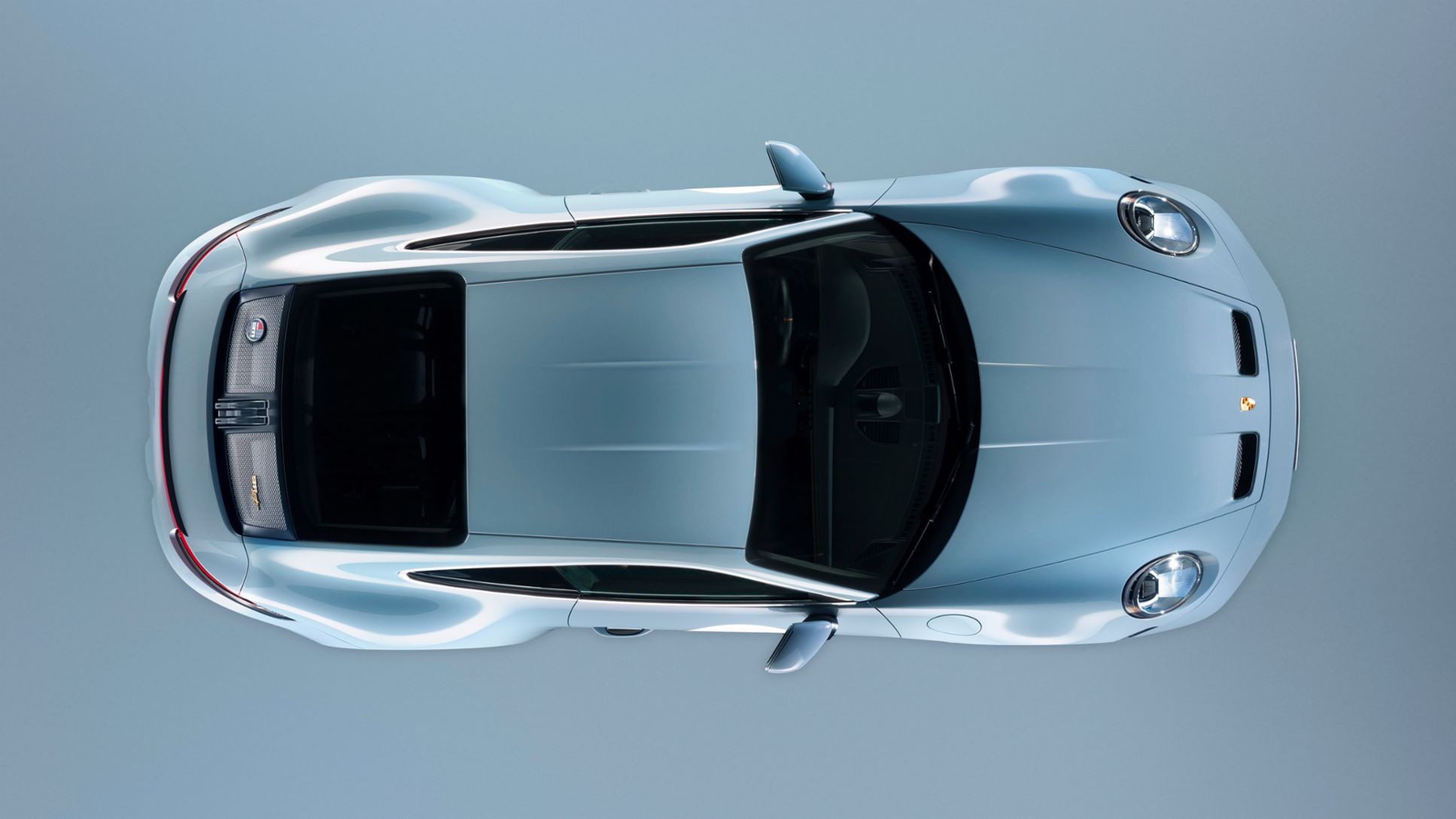Porsche laid the foundation for its icon in 1963, when a brand-new sports car made its world premiere at the IAA. At its core was a new six-cylinder at the rear, the first by Porsche. With two-liter displacement, the engine delivered 130 PS, for a top speed of 210 km/h. For the past 60 years, this technical layout has been the starting point for all further developments of the sports car originating from the 911.
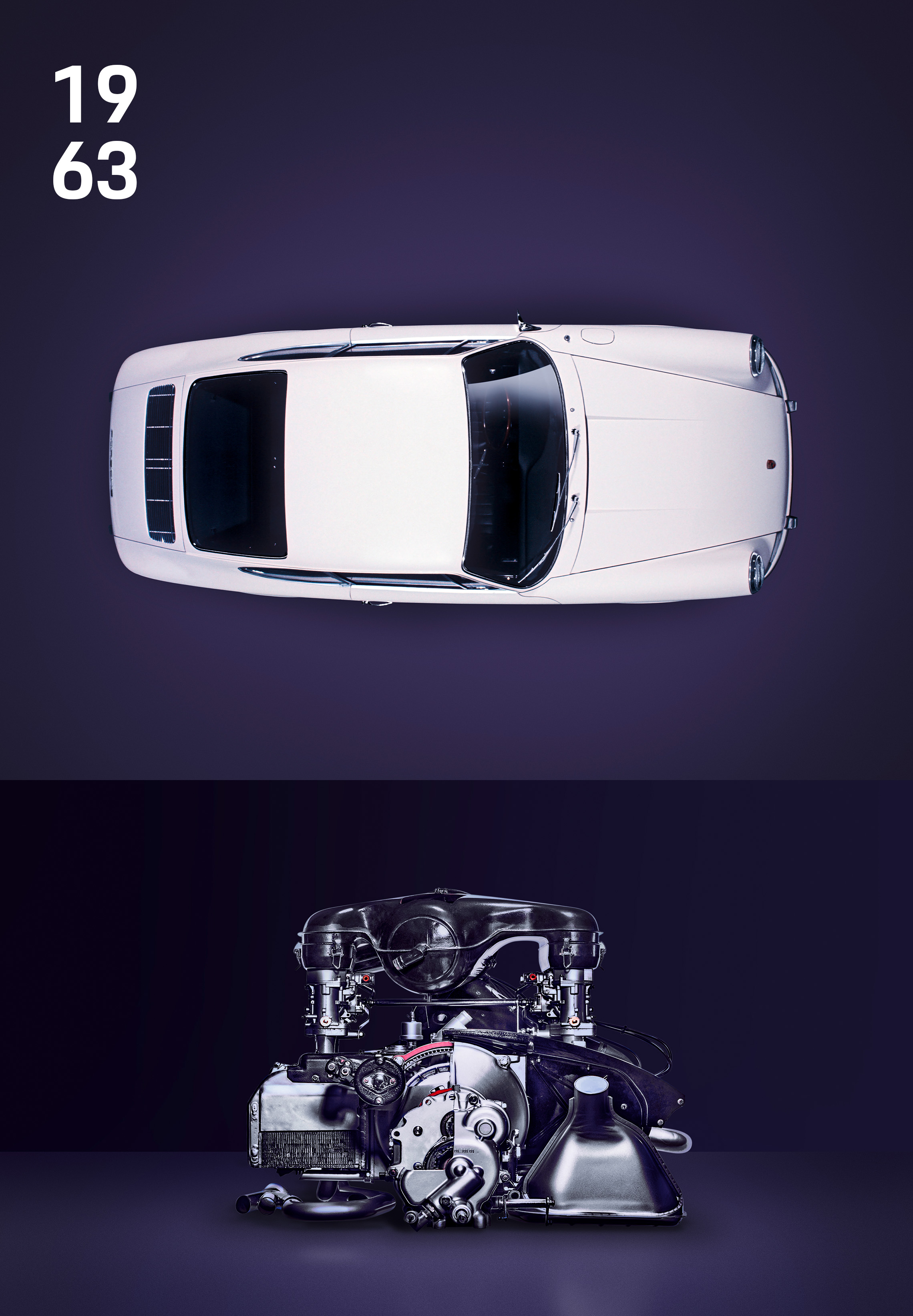
Sound Original 911 (1963)
Each generation of the 911 achieves new milestones in drive technology. In the early 1970s, Porsche put the increased power of turbocharging to the test in racing with great success. The technology was ready for series production in 1974, and Porsche presented the 911 Turbo (known internally as the 930). With 260 PS, it was one of the fastest cars of its time. Technologically speaking, Porsche was one step ahead of the competition. For the first time, boost pressure was regulated with a controlled valve on the exhaust side, taming power delivery and making the turbocharged engine suitable for everyday use. With its displacement increased to three liters, the Turbo engine was aspirated engines of the 911. Thanks to its unique combination of turbocharger and fuel injection, the 911 Turbo fulfilled the stringent American emissions regulations from the very start.
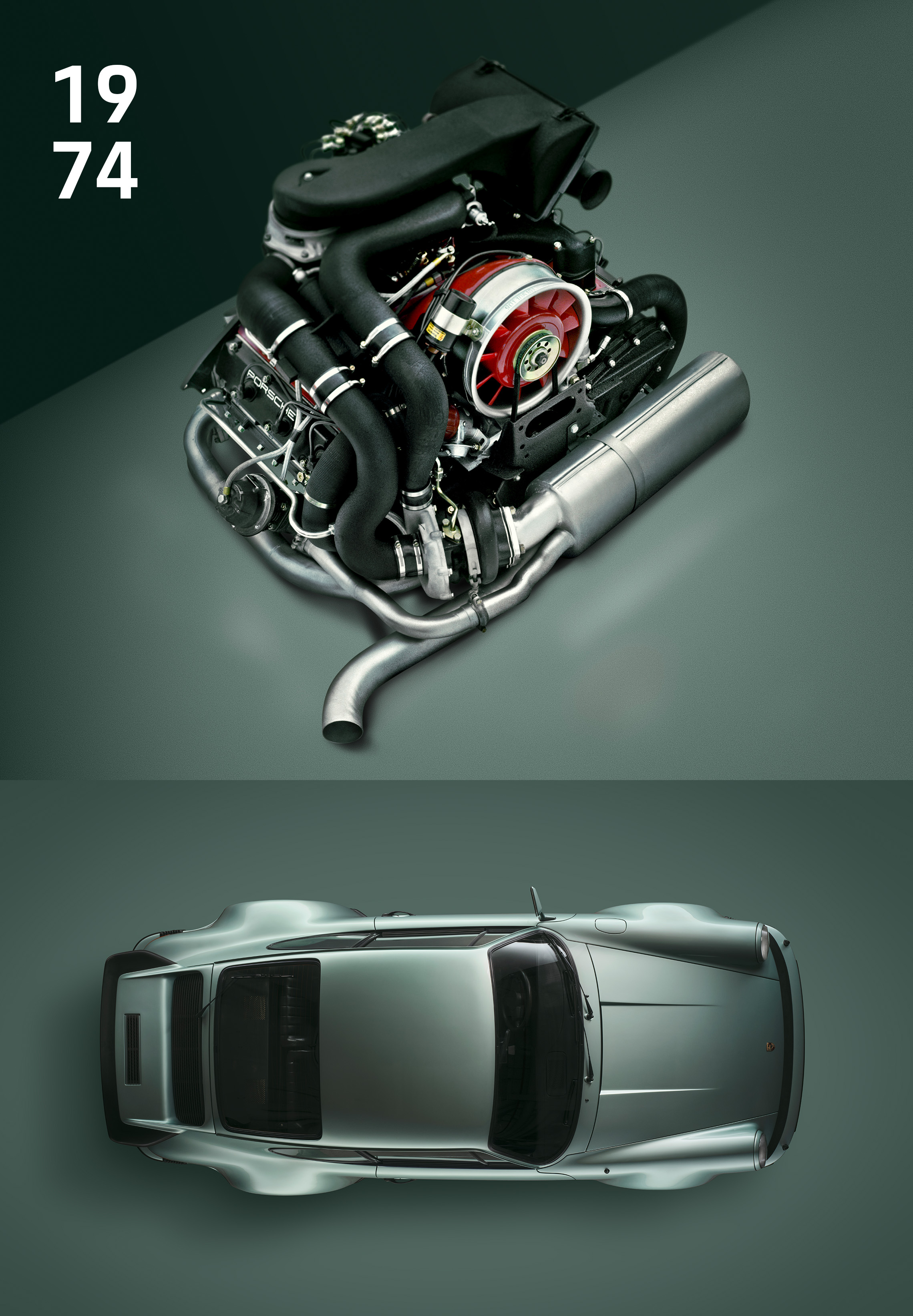
Sound 911 Turbo 3.0 (1974)
The 993-generation 911 Turbo was the crowning glory in the development of air-cooled six-cylinder engines in the mid 1990s and sparked the era of twin-turbo engines for the 911 series. Positioned very close to each bank of three cylinders, the two small turbos could respond to every movement of the accelerator faster than the single turbo in the previous model. The high-performance engine delivered 408 PS, surpassing the 400 PS mark for the first time. Also ambitious about exhaust gas aftertreatment, Porsche’s engineers equipped the sports car with two metal catalytic converters, four lambda probes, and intelligent engine management, making the 911 Turbo’s flat-six the lowest-emission production engine in the world in 1995.
The switch from air to water cooling was our ticket to the new technology. August Achleitner, Vice President Model Line 911 (2001 – 2018)
Two years later, the engineers would achieve the next milestone in engine development. To further improve the quality of the exhaust performance, they developed and brought cylinder heads with four valves per cylinder into series production, which required a paradigm shift: the six-cylinder boxer engine was converted from air to water cooling.
“That was our ticket to the new technology,” recalls August Achleitner, the certified engineer in charge of the department for technical product planning at that time. From 2001 to 2018, he was in charge of the model line 911. “There was just no more potential for the air-cooled two-valve engine.” Elimination of air cooling led to outrage among some die-hard 911 drivers, but it quickly petered out. The 996-generation 911 emerged as a great success and was groundbreaking in terms of emissions, sound, and fuel consumption.
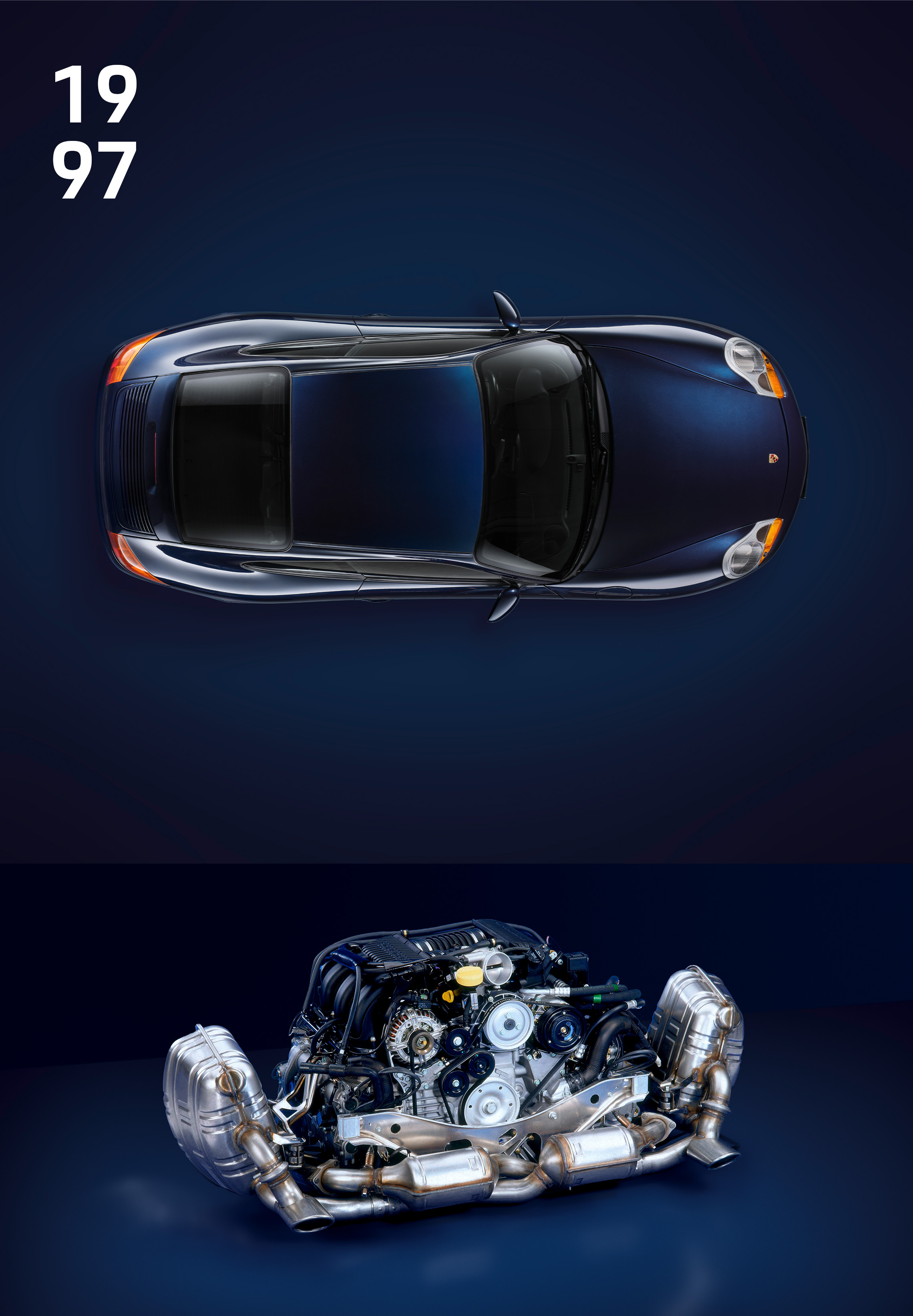
Sound 911 Turbo Generation 996 (1997)
Through this groundbreaking achievement, Porsche impressively underlined its pioneering role in turbo technology once again. Frank-Steffen Walliser, Vice President Model Lines 911 and 718 (2019 – 2022)
In 2006, the 911 Turbo achieved an impressive leap in performance in the 997-generation, with power and torque increasing by more than ten percent and specific output climbing to the new highest point of 98 kW (133 PS) per liter of displacement. Agility, in particular, increased dramatically thanks to new, unique turbocharger technology. For the first time, chargers with variable turbine geometry (VTG) supplied the engine of the 911 Turbo with process air. These VTG chargers were a world-first in combustion engines. Only with the development of high-alloy nickel-based materials with extreme resistance to high temperatures was it possible to manufacture VTG chargers with the necessary fatigue strength and service life. This technology enabled optimum use of the entire exhaust stream at all speeds for the purpose of turbocharging. The variable geometry of the charger was calculated to ensure that it was able to handle even the maximum exhaust mass that could occur, which in turn eliminated the need for a bypass valve. “Through this groundbreaking achievement, Porsche impressively underlined its pioneering role in turbo technology once again,” says Frank-Steffen Walliser, who oversaw the 911 and 718 model lines from 2019 to 2022. “The VTG chargers helped the six-cylinder turbo achieve a dramatic jump in power to up to 515 kW (700 PS) in the 911 GT2 RS.”
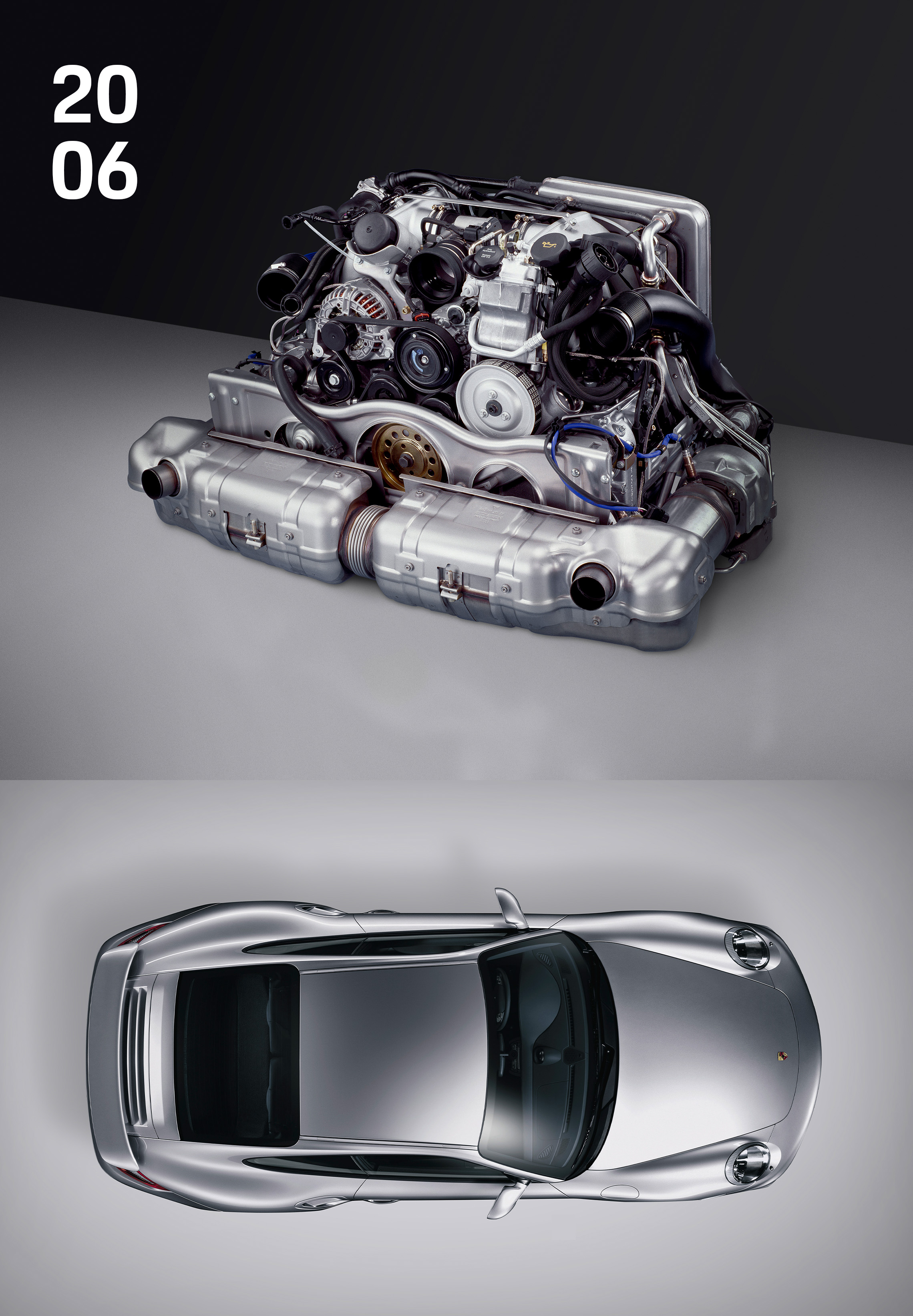
Sound 911 Turbo Generation 997 (2006)
The high-performance hybrid seamlessly continues innovative development of the 911 drive. Frank Moser, Vice President Model Lines 911 and 718
Whether engines or transmissions, some developments required time to mature. In the 1980s, Porsche built the first dual-clutch transmission for motorsport and won races with it. All that was missing for application in series production were control electronics with sufficient power. Porsche picked up development again with its digitalization activities. The first dual-clutch transmission for production sports cars made its debut in the 911 Carrera in 2008. The Porsche dual-clutch transmission (PDK) combined the driving dynamics and highly impressive mechanical efficiency of a manual transmission with the high gearshift and driving comfort of an automatic transmission. Even at its debut, the PDK transmission was able to change gears up to 60 percent faster than an automatic transmission that shifts gears via a torque converter—the more common method at that time. It also enabled gear changes without interrupting drive to the wheels and reduced fuel consumption. The transmission was a sensational success. More than three quarters of all Porsche 718 and 911 models delivered today are equipped with PDK.

The next big step in 2024 is just around the corner, as Porsche has developed an ultra-sporty hybrid—as seen in racing—for selected derivatives of the 911 model line. “The high-performance hybrid seamlessly continues innovative development of the 911 drive,” says Frank Moser, who now manages the 911 and 718 model lines. “This benefits the driver whenever they’re accelerating. We therefore have a technology that will prepare us for future emission standards.” Typical of the Porsche 911.
